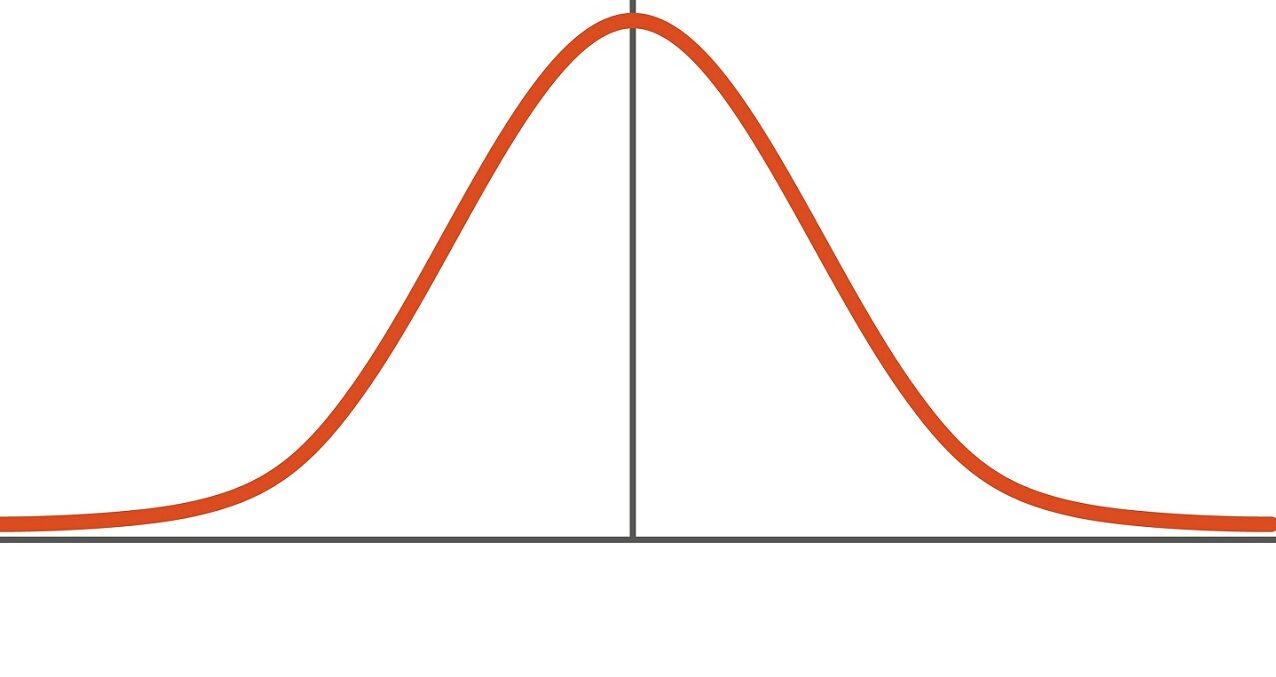
This article is a part of the The FTC's New Normal symposium.

This symposium wonders what exactly is “The FTC’s New Normal”? The short answer: scary.
The current Federal Trade Commission (FTC) leadership is clear that old U.S. Supreme Court opinions, rather than more recent jurisprudence, are their lodestones for antitrust analysis. This is dramatically illustrated by the draft merger guidelines recently proposed by the FTC and U.S. Justice Department’s (DOJ) Antitrust Division; as Geoff Manne has noted, of the 48 antitrust decisions cited, only 10 are from this century, and on a weighted-average basis, the cases cited are almost a half-century old!
Given this focus, it makes sense to look back to those old Supreme Court pronouncements to find the driving principles behind the current FTC’s desired enforcement approach. And as it happens, we can find them in the writings of a single Supreme Court justice who retired 42 years ago, about at the start of the period of what FTC Chair Lina Khan has described as “enfeebled” antitrust enforcement.
Justice Potter Stewart was an able and respected member of the Court, but he is most-often remembered today for three sentences that perfectly capture the antitrust philosophy of the current antitrust agencies. One was his completely justified lament about merger enforcement in Von’s Grocery (1966): “The sole consistency that I can find is that under Section 7, the Government always wins.” Based on its actions and policy pronouncements over the last two years (especially the draft guidelines and the proposed amendments to the Hart-Scott-Rodino notification form), the FTC clearly wants to return to those “good old days.”
In an even more famous Stewart quote, two sentences from Jacobellis (1964), perfectly captures the FTC’s apparent view on how to evaluate mergers:
I shall not today attempt further to define the kinds of material I understand to be embraced within that shorthand description [“hard-core pornography”], and perhaps I could never succeed in intelligibly doing so. But I know it when I see it . . . . (emphasis added)
If you believe, as the agencies assert on page 11 of the draft merger guidelines (with a citation to a concurring opinion by Justice Thurgood Marshall, which seems slightly less than definitive), that mergers are generally bad and need to be discouraged, then the guidelines make perfect sense. The agencies don’t like mergers, would like to see a lot fewer of them, and are going to do their best to discourage them by making it much more costly and dangerous to go through the regulatory process. The agencies will know an anticompetitive merger when they see one, even if they can’t tell you exactly how or why.
Potter Stewart was a mainline Republican, but he has apparently captured the hearts and minds of the ideological activists currently in charge of our federal antitrust agencies. Who’da thunk it?
I am a creature of the enfeebled age of antitrust. I took my first law school antitrust course the same year the 1968 merger guidelines were issued, and joined the DOJ Antitrust Division two years later. In 1976, Jimmy Carter won the presidential election and named Mike Pertschuk to be FTC chairman. The new Assistant U.S. Attorney General for Antitrust John Shenefield had asked me to stay as part of his team for a year or two, but surprisingly, Pertschuk asked me to lunch at his favorite Chinese restaurant and invited me to become the head of the FTC’s Bureau of Competition (BOC).
Before I could give him an answer, he withdrew the offer, explaining that he had gotten some negative reaction from the Hill. While it is interesting to muse on how Mike and I would have worked together, my FTC experience instead comes from interacting with every set of commissioners and every BOC head from that time until my retirement 20 days before Donald Trump took office, a period that coincides nicely with the time the current FTC leadership sees as an abdication of antitrust-enforcement responsibility by both Democratic and Republican administrations.
It should be a source of pride that, for the entirety of that period, there was a broad consensus about what antitrust was and should be. Yes, there were Republican and Democratic variations, conservative and liberal variations, but the differences between the 1982 Baxter guidelines and the 2010 Obama administration guidelines, for example, were of degree and not of kind. While there were a few outliers, most antitrust lawyers, academics, and economists fit into the middle of the bell curve. This is no longer true.
There is now a serious divide between the historical bipartisan consensus view—that antitrust is a law-enforcement mechanism used to deter or correct various kinds of impediments to competition—and the apparent perspective of the current FTC and Antitrust Division leadership. I can’t read their minds, but their speeches and actions suggest they see antitrust as simply another in the myriad of regulatory tools that can and should be used to promote a particular set of industrial and social policies. They clearly believe most of the last 50 years of antitrust activity was misguided and damaging to the broader societal interests they wish to promote. Given this perspective, any discussion of whether today’s FTC is “normal” rather dramatically understates the debate.
We are all prisoners of our own experience, and mine tells me that this “new normal” is dangerous, not just to sound antitrust policy but potentially to the continued success of the remarkable economic story that is the United States. That may sound overly dramatic; after all, there are many reasons the U.S. economy is stronger and more resilient than anywhere else in the world. But surely, one very important reason is the historical support and protection of a generally market-driven economy. In part because our antitrust laws have, in a macro sense, been properly calibrated, the United States is the most innovative economy in the world and has produced the best economic results the world has ever seen.
The current FTC and Antitrust Division leadership do not agree. They see a highly concentrated American economy that has produced deep economic and social division and inequality, and they see the last 40-plus years of bipartisan antitrust consensus as a big part of the problem. Their solution: throw out the baby, the bathwater, and the tub, and then remodel the bathroom. They want to return to the time when big was bad and Supreme Court populist meanderings, not analysis, decided cases, while adding in a few extra populist wrinkles to advance their view of a better society.
This is not mere bureaucratic overreaching, which has been endemic over the almost 50 years of HSR. Do you remember when the HSR Act was said by its congressional sponsors to only deal with “the very largest corporate mergers – about the 150 largest out of the thousands that take place every year”? We know how that turned out, with a typical year now seeing more than 2000 HSR filings.
Remember when cosponsor Rep. Peter Rodino (D-N.J.) asserted that the information required with the pre-merger filing would be “reasonable,” mostly consisting of “the very data that is already available to the merging parties, and has already been assembled and analyzed by them”? As Debbie Majoras and I pointed out more than 25 years ago, this was wildly mistaken, overtaken by the traditional combination of malleable statutory language and the inexorable bureaucratic impulse to aggrandize power and authority. The recently proposed changes to the HSR pre-merger notification form would exponentially increase this burden, which of course applies to every filing, including the more than 98% that even Chair Khan admits raise no antitrust issues at all.
No, these are not just bureaucrats stretching their authority. These are the most important antitrust agencies in the world advocating a potentially existential attack on common-sense antitrust. I must admit I am bummed that Luke Froeb, Daniel Sokol, & Liad Wagman, in the title of their analysis of the draft guidelines, captured this inanity perfectly before I thought of their phrasing: “Cost Benefit Analysis Without the Benefits or the Analysis.”
The draft merger guidelines are the starkest indication of what the agencies have in mind, about which there has already been a lot of commentary. Some of it is hard to understand, as when Bill Baer, a very experienced and quite capable antitrust lawyer, asserts that they continue the historical focus on market power, when they clearly do not. This is like saying Donald Trump continues the GOP’s historical focus on small government and conservative values. The reason the underlying concepts of the 1982 guidelines and their progeny survived and were adopted by virtually all courts over four decades was because they stated a coherent and rational approach to merger analysis focused on the creation of market power, adjusted over the years to stay consistent with the state of the law and economics. The draft guidelines, by contrast, are not consistent with (indeed, they flatly reject) the current state of antitrust merger law and they virtually ignore economics. They preach rather than guide. They are a political manifesto.
Why is this? The authors may be partisan and ideological, but they are not stupid. They must know that it is going to be very difficult to convince federal judges to ignore the last more than four decades of precedent by citing very generic language in 50-year-old Supreme Court opinions about the purpose of the antitrust laws. They already have some experience over the last two years with this approach, and the result is a string of litigated losses. The agencies must know that this radical document will be immediately withdrawn the moment a Republican administration takes power (and perhaps even a subsequent Democratic administration). So, what is up here?
I suspect they have a very different audience in mind: companies and their antitrust lawyers. Sure, they will file a few cases and hope that some judge somewhere will find their ipse dixit persuasive, but the real goal of the draft guidelines is to deter transactions before they are even attempted. They want to plant a flag in the extreme corner of antitrust, with the hope that they may eventually see some migration in that direction. In the meantime, they hope to deter as many transactions as possible, especially by the large companies they so clearly perceive as the source of many of the poor policy outcomes of the last half century.
Greg Werden, who may be the only person involved in the drafting of every set of merger guidelines since 1982, has submitted more than 50 pages of cogent comments on the draft guidelines, so I will defer to his detailed analysis. But just a few examples will illustrate just how radical and extreme they are:
- On vertical mergers, the agencies literally just make it up, saying that a firm with a 50% market share cannot buy anyone, however small, without violating the Clayton Act. No market analysis, no examination of arguable competitive effects—any purchase, however small, by a successful company is presumptively illegal. This is not even credible advocacy, much less a statement of the law. If it is truly a statement of enforcement intention, there are a lot more agency losses coming if anyone has the time and willingness to take them to court.
- In guideline 4, the draft merger guidelines immoderately describes a potential entrant as anyone that is perceived or has the capability to “expand or reallocate resources in a way that could increase competition in the relevant market.” Since the Supreme Court has never found any merger illegal under a potential-competition theory, I look forward to the agencies trying to convince a federal judge that the loss of one out of more than a few equally capable (but not even perceived) potential entrants violates Section 7.
- The draft guidelines assert that any merger that would create the ability to make it harder for rivals to compete is presumptively anticompetitive, even if the agencies cannot “specify the precise actions the merged firms would take to weaken rivals.” Of course, one of the ways a firm may make it tougher for rivals to compete is through becoming more efficient, but the agencies—like the geriatric case law they prefer—view efficiencies as more of a problem than a benefit, especially if it will “accelerate a trend toward concentration . . . or vertical integration.” Using fewer resources to produce the same output is presumptively anticompetitive, they say; it is hard to overstate how radical this is.
As these points illustrate, much of what is contained in the draft guidelines is nonsense. Along the way, there are some useful incremental additions—mostly dealing with modern merger theory that has developed since the 2010 Obama guidelines—but the overall document can only be understood if the goal is to reduce the number of mergers considered, much less proposed. Because the agencies’ leadership affirmatively rejects the broad pro-competitive value of transactions, fewer transactions attempted—anticompetitive or not—is clearly considered a feature, not a bug,
Carl Shapiro, one of the most effective and consistent advocates of stronger merger enforcement over the last more than 20 years, and Greg Werden both worry that the highly positive influence of merger guidelines as a guide for how to think about merger analysis, and thus their influence with judges, may well end if these guidelines are adopted in their present form. In a way, that would be sad, as it would put a final punctuation mark to the end of a half-century of nonpartisan consensus. Unfortunately, given the harm the draft merger guidelines in their present form would cause if they ever became influential, this is a sad result we should all hope comes to pass.
So, is the FTC’s “new normal” … normal? Only if you think Huey Long and “Boss” Tweed were normal politicians or Ned Ludd was just another labor organizer. I cling to the optimistic view that, eventually, common sense will prevail, and we can return to the large part of the bell curve of bipartisan antitrust. But this is not at all inevitable.




